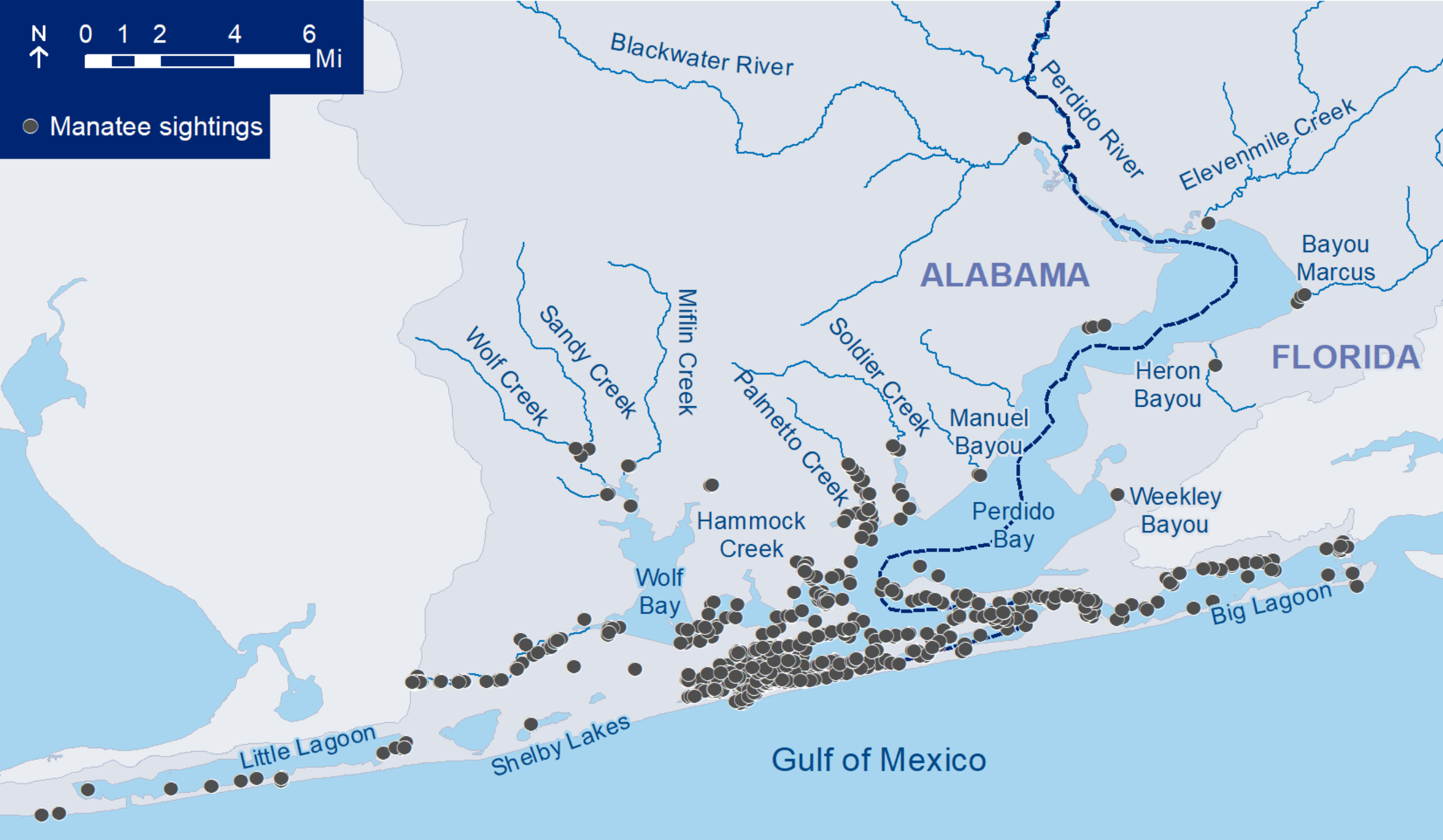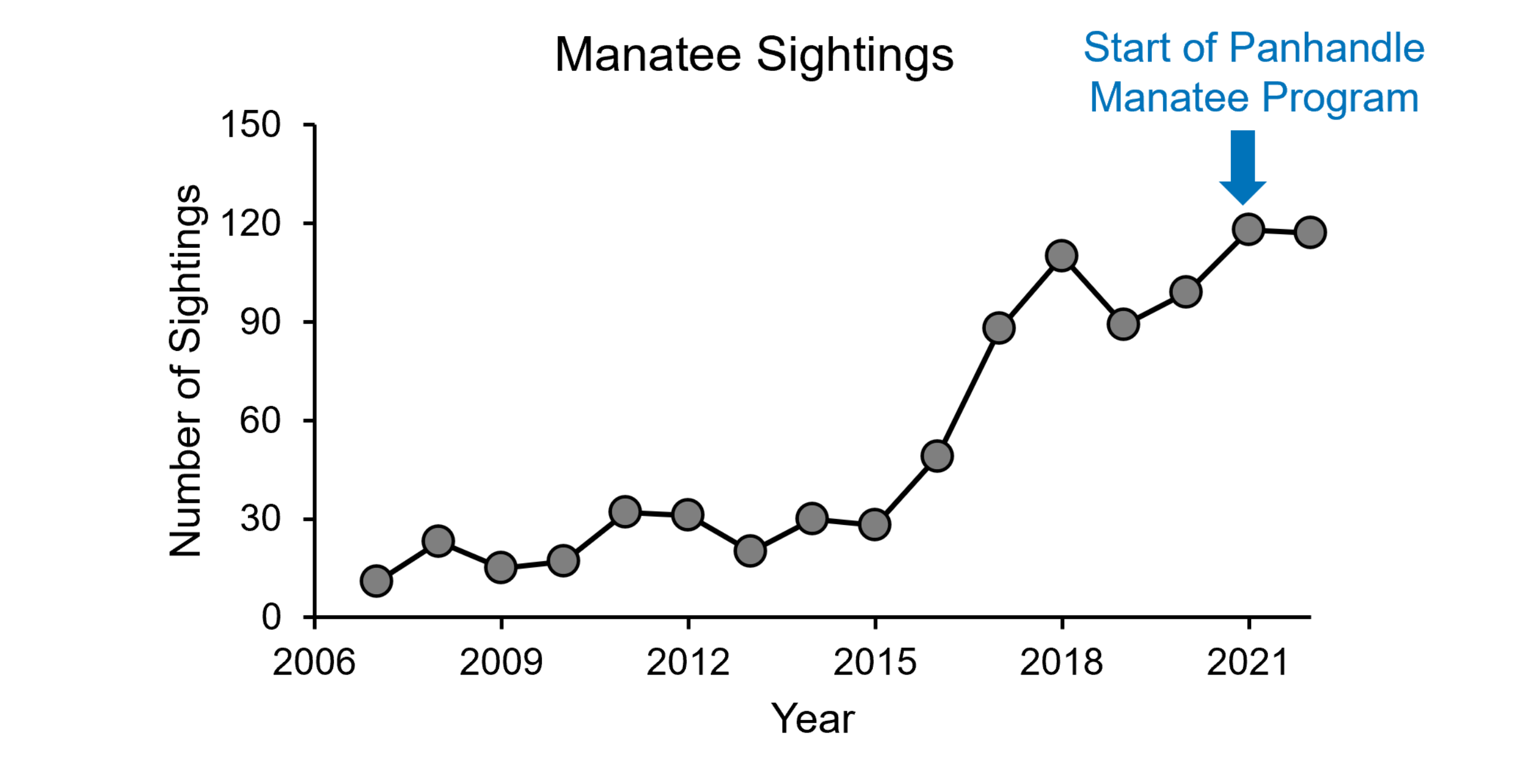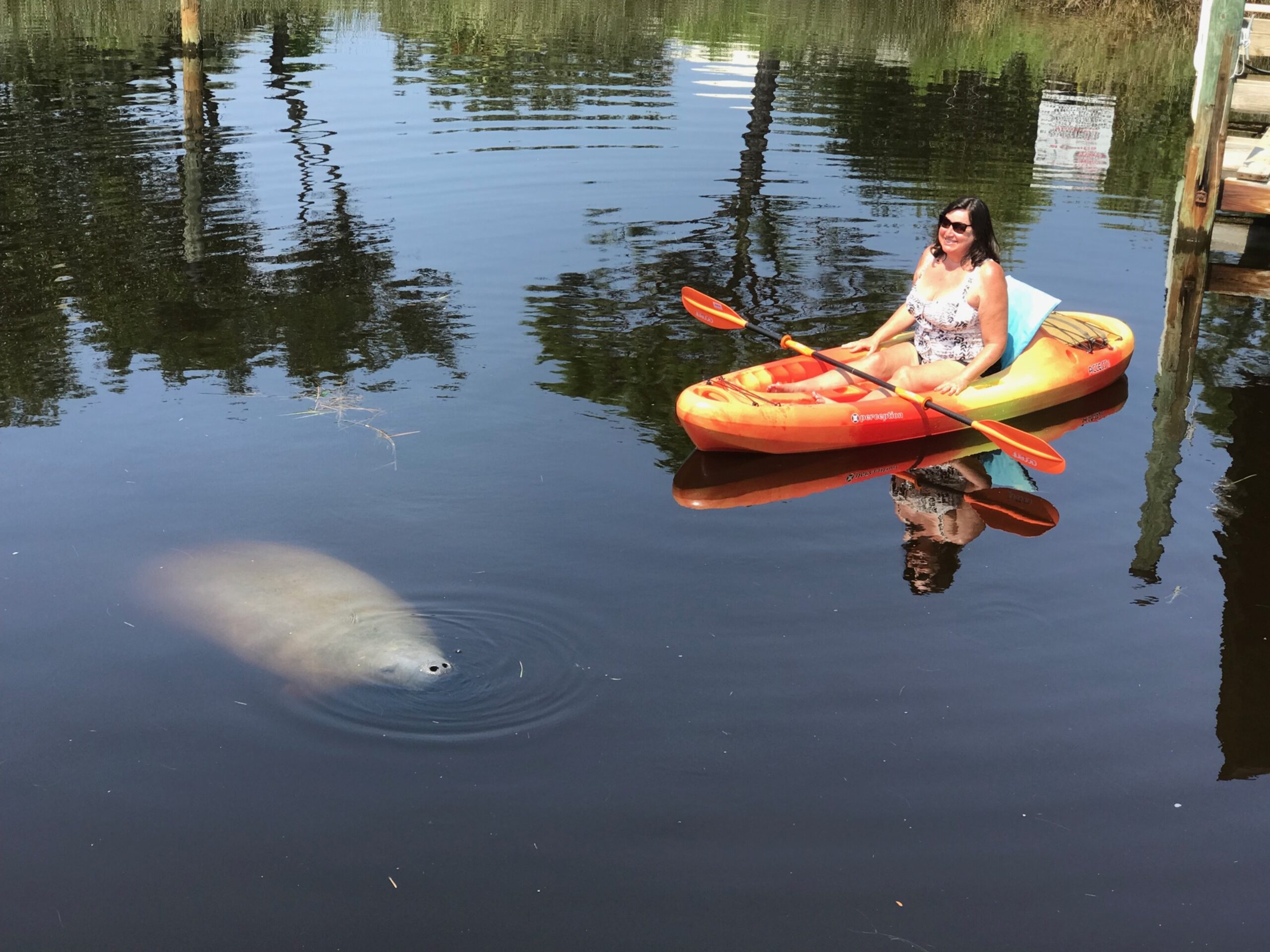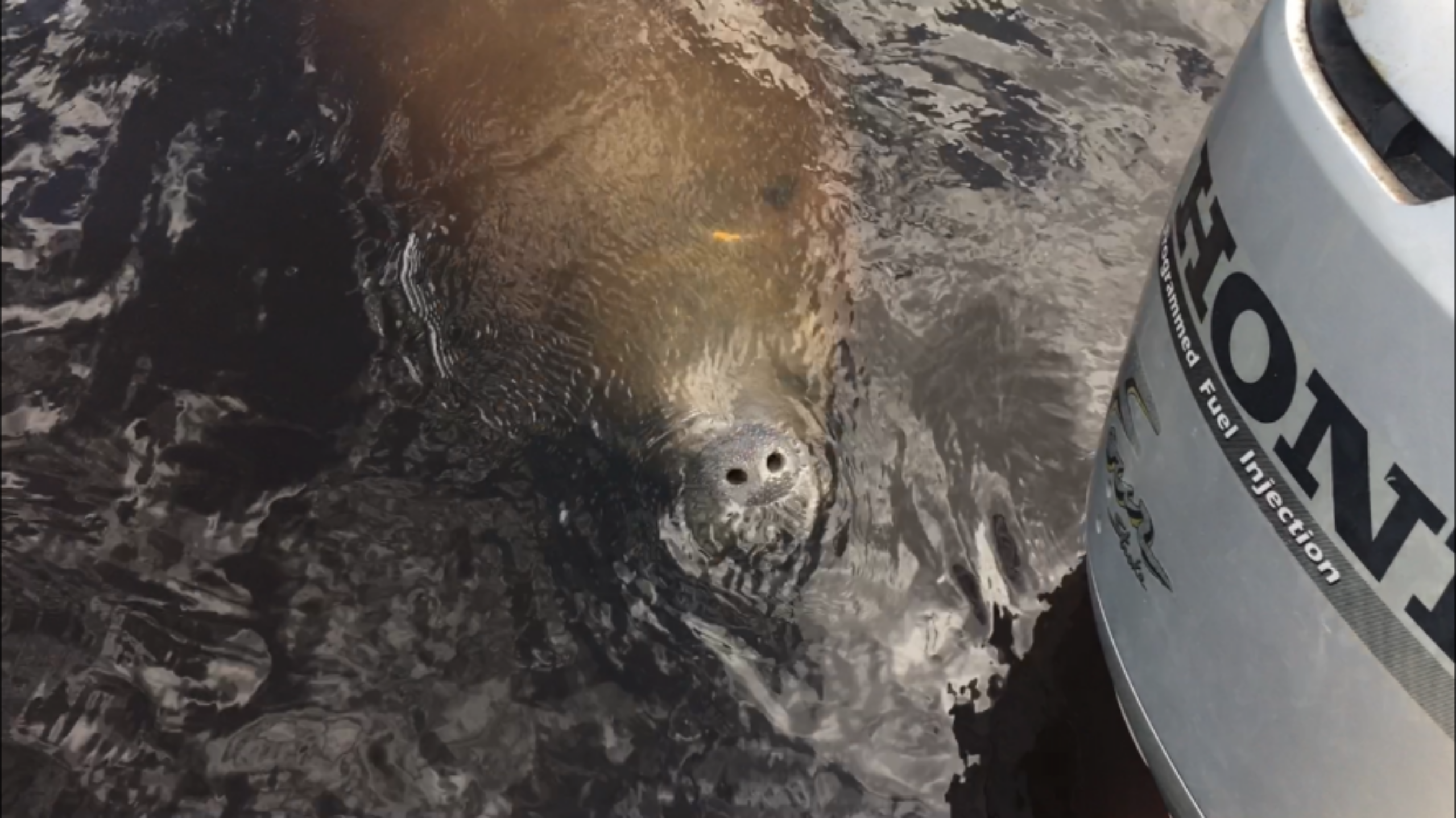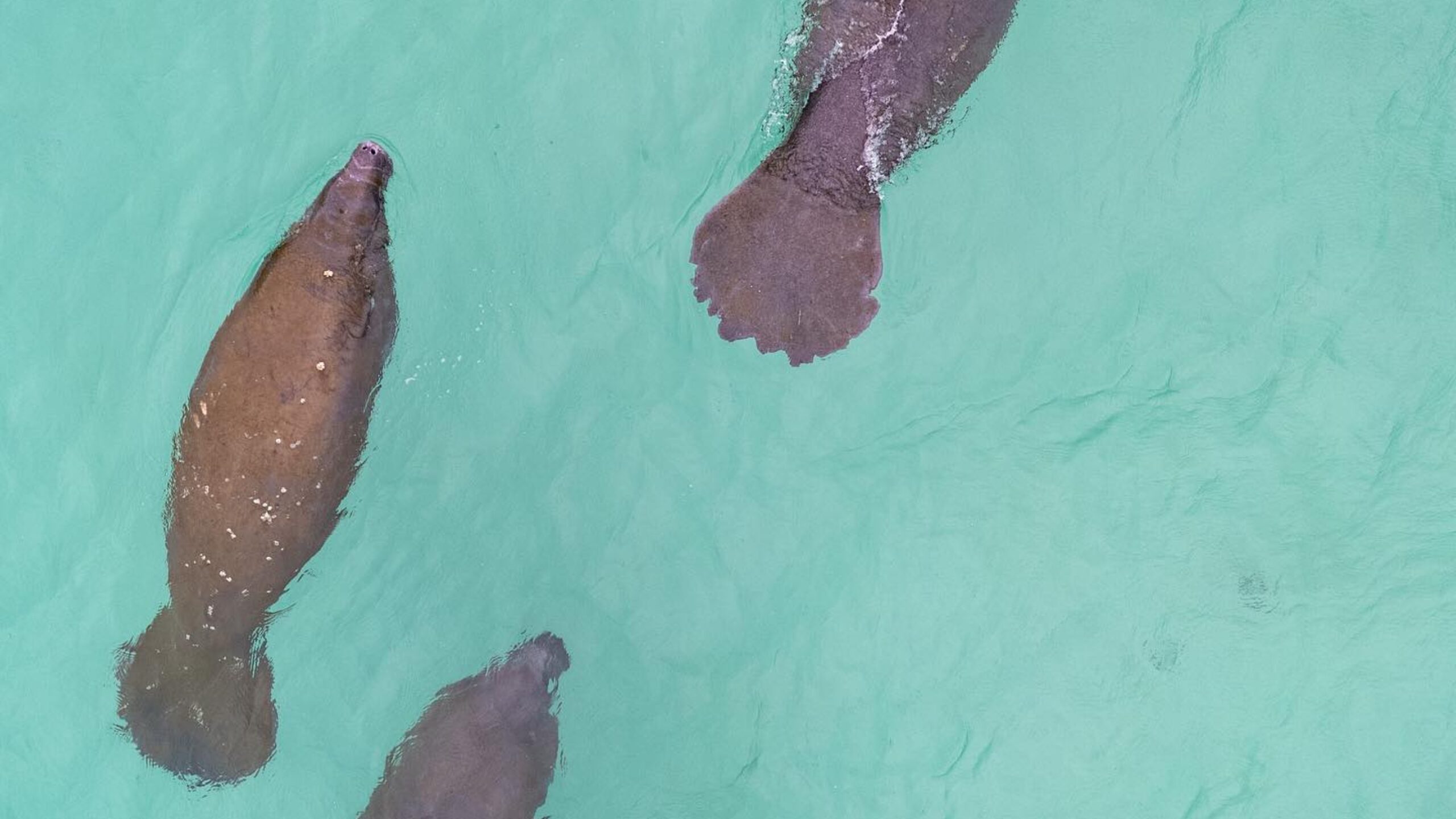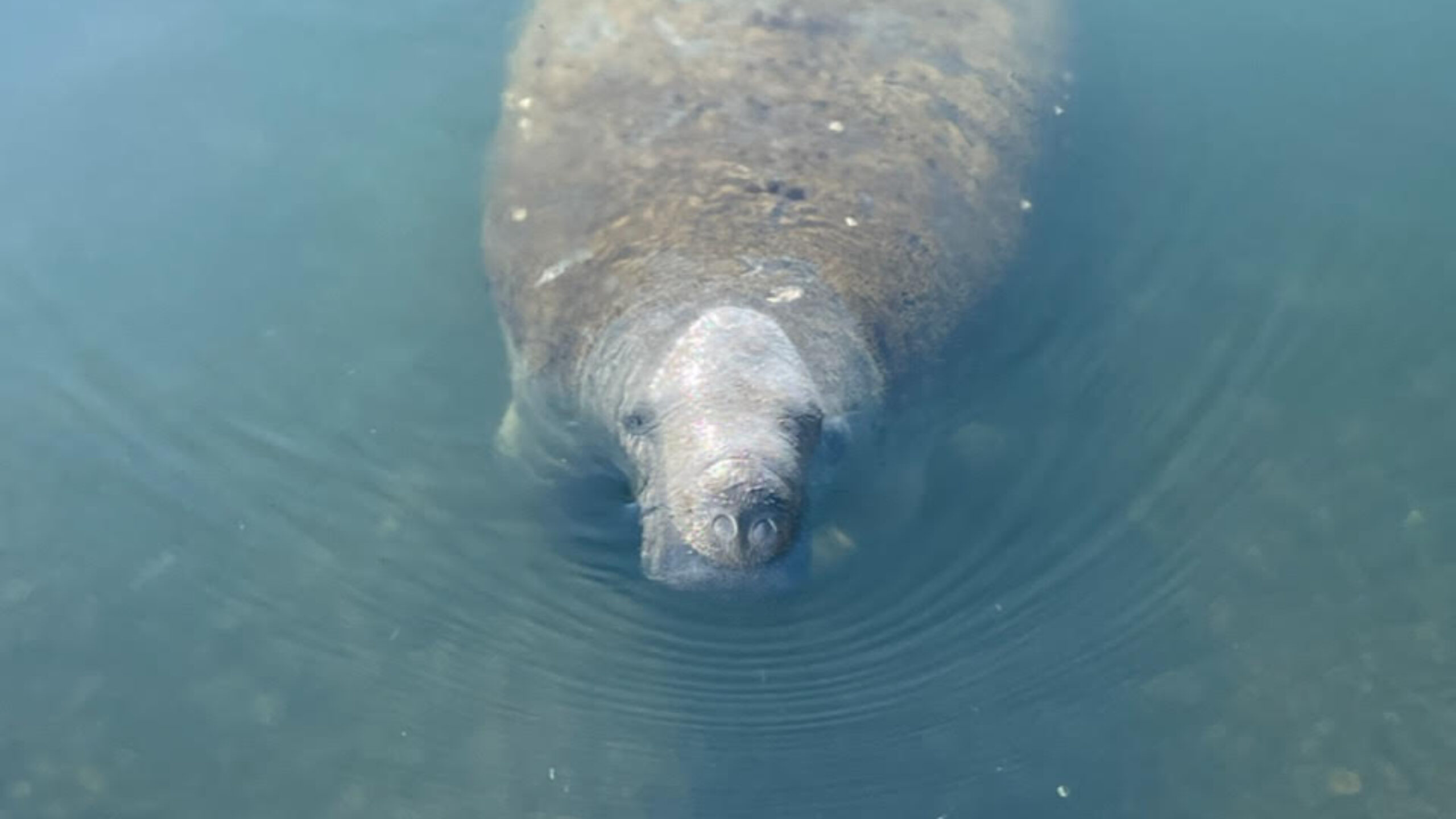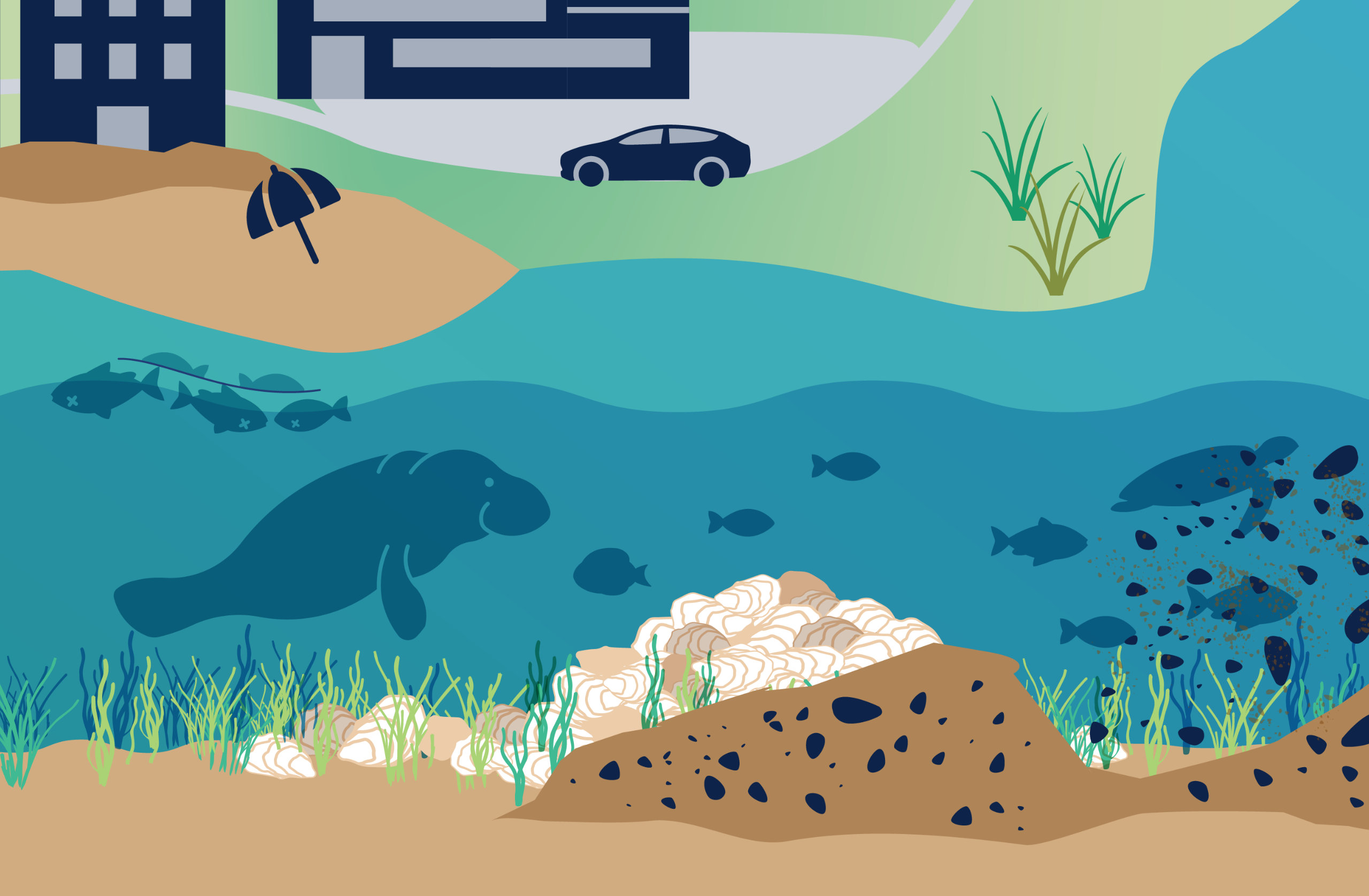

Wildlife in our Watersheds

Manatees:
Marine mammals, like manatees, migrating to the northern Gulf Coast are dependent on underwater plants, including seagrasses, that are found in shallow coastal waters.

Pensacola Bay
Manatees

The West Indian Manatee is a federally protected species with an estimated population of more than 6,500 individuals in the southeastern U.S. (USFWS). Manatees are commonly found in coastal and riverine areas of peninsular Florida and they migrate to the northern Gulf Coast during spring and summer, with peak sightings occurring June through August. They feed on seagrass and other aquatic plants in shallow marine and freshwater habitats.
- Manatees use our bays as a migratory corridor
- Most sightings occurred close to the coast, but manatees have been seen as far north as Blackwater River, FL
- Sightings increased after the start of Panhandle Manatee Program outreach efforts
- Increased sightings are likely a combination of increased awareness and more manatees in the area
- Your sightings help support manatee conservation!
How can you help manatees?
- Boat slow where seagrasses grow
Seagrass beds are an important manatee food source. Boat with caution to avoid manatees and seagrass - Report sightings at www.panhandlemanatee.org
Researchers depend on data from the public to track manatee habits - Volunteer with Panhandle Manatee!
Help protect manatees by educating residents and visitors - Do not feed or provide water to manatees
Doing so can change their natural behavior, migration patterns, and increase the risk of injury - Give manatees space
The best rule of thumb is to stay at least 100 feet away. Do not attempt to pet or swim with manatees - Properly discard used nets, fishing line, and trash
Entanglement or ingestion of marine debris can be fatal to manatees
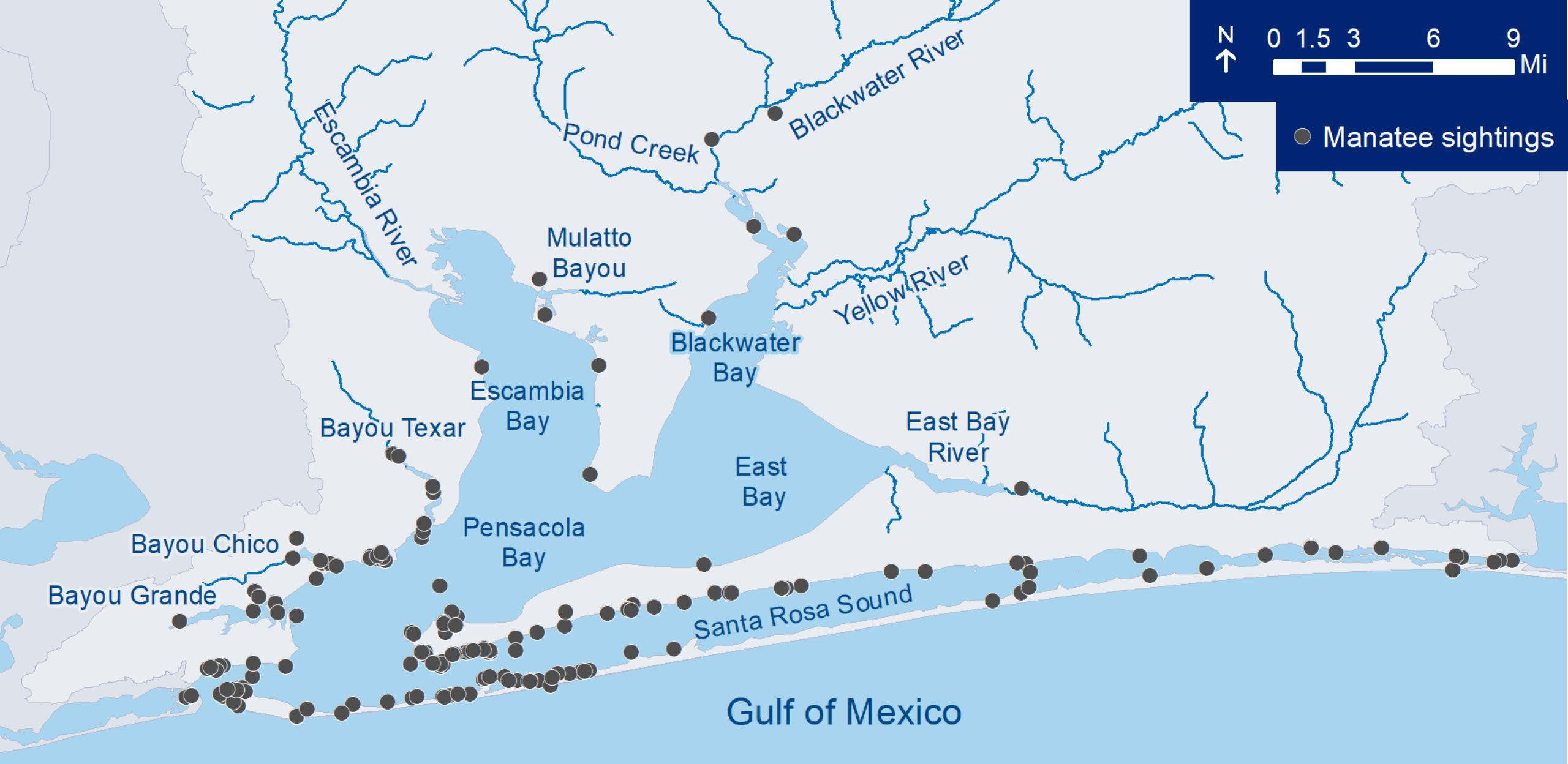
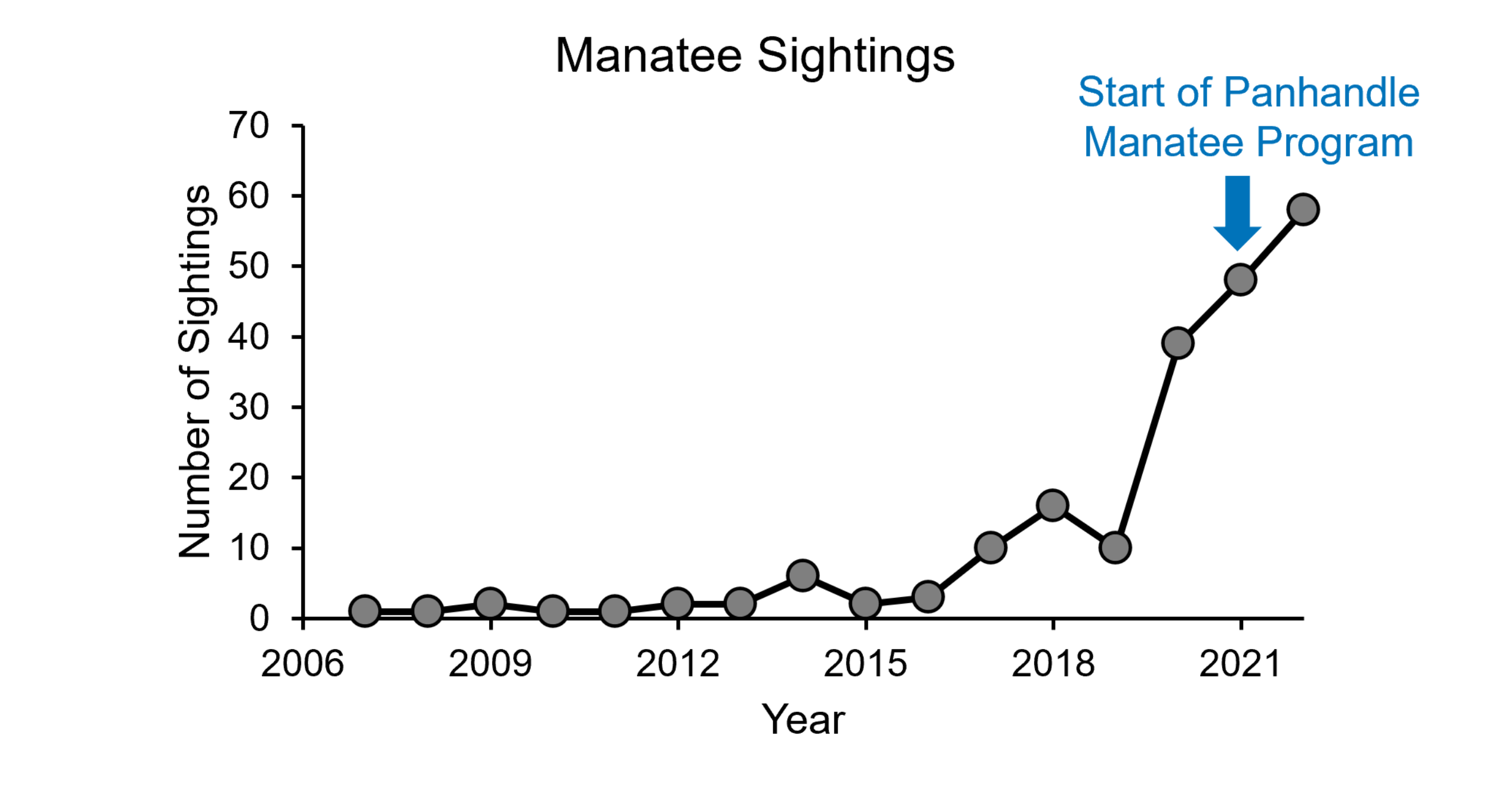

Perdido Bay
Manatees

The West Indian Manatee is a federally protected species with an estimated population of more than 6,500 individuals in the southeastern U.S. (USFWS). Manatees are commonly found in coastal and riverine areas of peninsular Florida and they migrate to the northern Gulf Coast during spring and summer, with peak sightings occurring June through August. They feed on seagrass and other aquatic plants in shallow marine and freshwater habitats.
- Manatees use our coastal areas as migratory corridors
- Most sightings occurred in lower Perdido Bay and Intracoastal Waterway (ICW) and as far north as Blackwater River, AL
- Increased sightings are likely a combination of increased awareness and more manatees in the area
- Your sightings help support manatee conservation!
How can you help manatees?
- Boat slow where seagrasses grow
Seagrass beds are an important manatee food source. Boat with caution to avoid manatees and seagrass - Report sightings at www.panhandlemanatee.org
Researchers depend on data from the public to track manatee habits - Volunteer with Panhandle Manatee!
Help protect manatees by educating residents and visitors - Do not feed or provide water to manatees
Doing so can change their natural behavior, migration patterns, and increase the risk of injury - Give manatees space
The best rule of thumb is to stay at least 100 feet away. Do not attempt to pet or swim with manatees - Properly discard used nets, fishing line, and trash
Entanglement or ingestion of marine debris can be fatal to manatees
